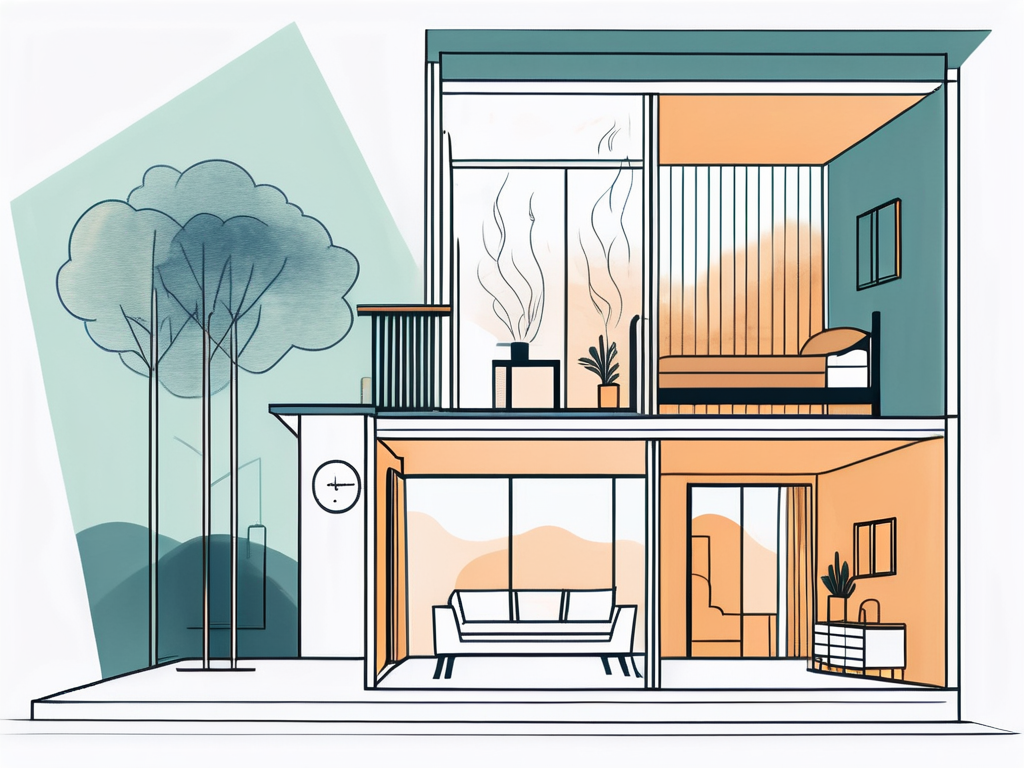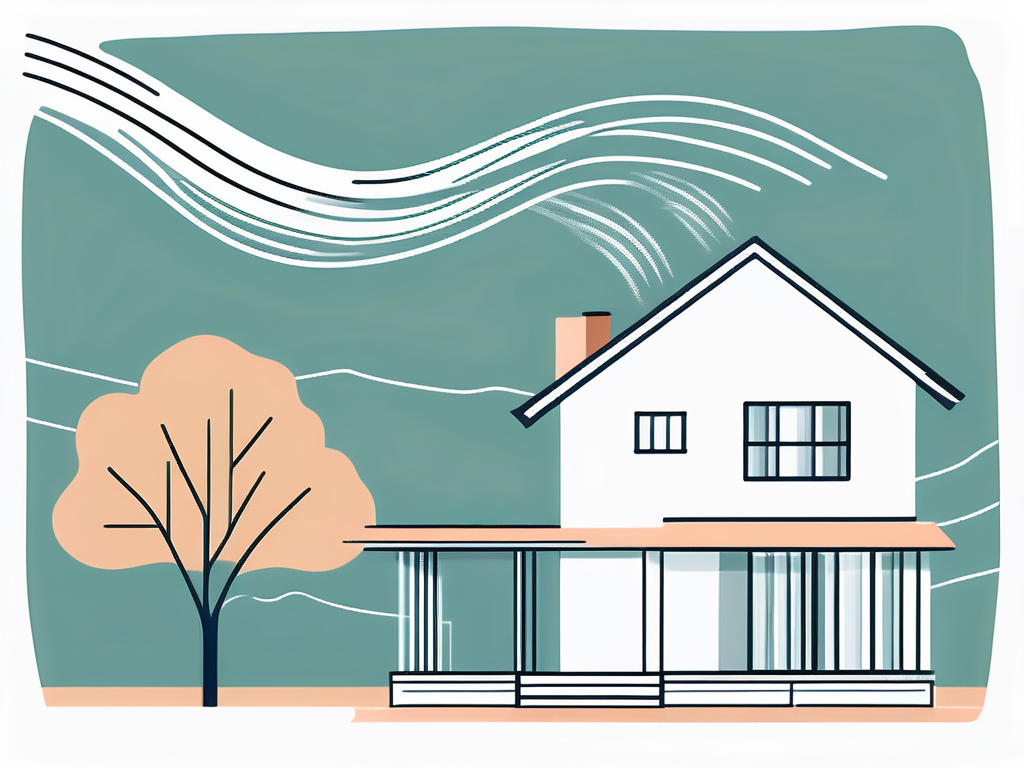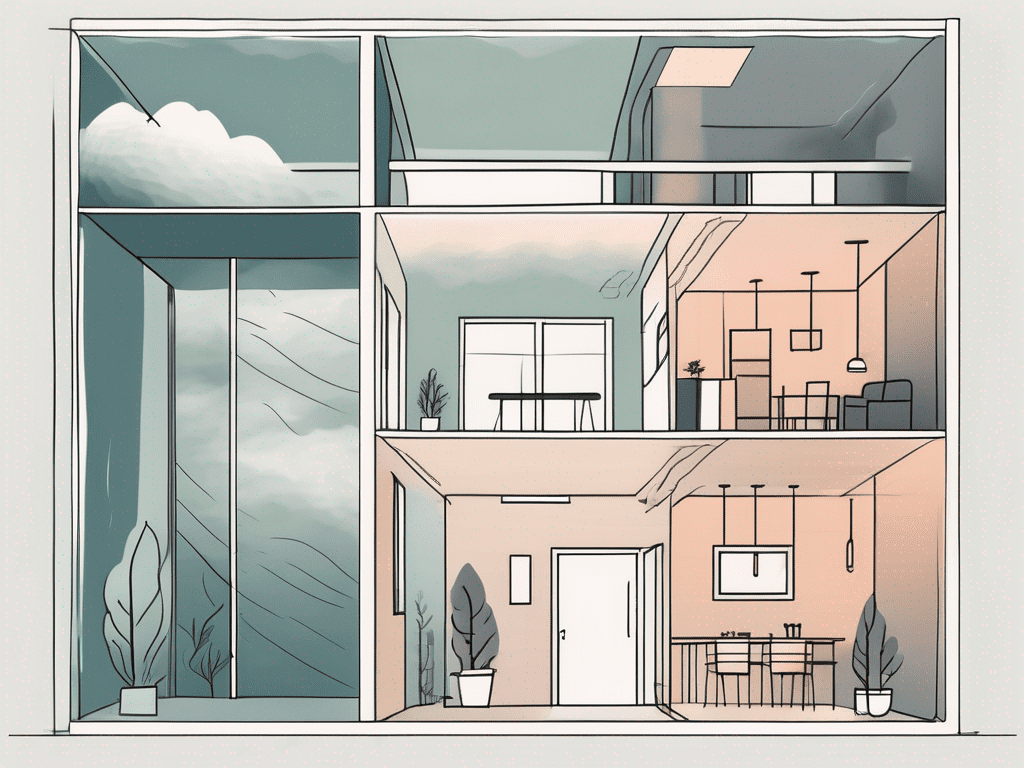The air exchange rate, also known as the air change rate or air turnover rate, is a critical factor in determining indoor air quality. It refers to the number of times the air within a specific space is replaced with fresh air from outside in a given period. This concept is integral to understanding and managing indoor air quality, as it directly impacts the concentration of pollutants and contaminants in the air we breathe indoors.
Indoor air quality is a significant concern as people spend a majority of their time indoors, whether at home, work, or in other enclosed spaces. Poor indoor air quality can lead to a variety of health problems, including allergies, respiratory issues, and even serious diseases. Therefore, understanding and controlling the air exchange rate is crucial for maintaining a healthy indoor environment.
Understanding the Concept of Air Exchange Rate
The air exchange rate is a measure of the ventilation in a building or a specific room. It is typically expressed in air changes per hour (ACH), which indicates how many times the total volume of air in the space is replaced with fresh air every hour. A higher air exchange rate means more fresh air is brought into the space, diluting and removing indoor air pollutants.

However, the ideal air exchange rate can vary depending on several factors, including the size and layout of the space, the number of occupants, their activities, and the quality of the outdoor air. For instance, a crowded office space may require a higher air exchange rate than a sparsely occupied home to maintain good air quality.
Calculating the Air Exchange Rate
The air exchange rate can be calculated using various methods. One common method is the tracer gas technique, where a harmless gas is released into the space, and its concentration is measured over time. The rate at which the gas concentration decreases provides an estimate of the air exchange rate.
Another method involves measuring the airflow rates of all ventilation systems in the space, such as windows, doors, and mechanical ventilation systems. By adding up these rates and dividing by the volume of the space, the air exchange rate can be calculated. However, this method assumes that the ventilation systems are operating efficiently and that the air is perfectly mixed, which may not always be the case.
Factors Affecting the Air Exchange Rate
Several factors can affect the air exchange rate in a space. These include the design and operation of the ventilation systems, the size and layout of the space, the number and activities of the occupants, and the weather conditions. For instance, opening windows and doors can increase the air exchange rate, while airtight construction and insulation can decrease it.
Occupant activities can also significantly impact the air exchange rate. Activities that generate heat or moisture, such as cooking, bathing, or exercising, can increase the need for ventilation. Similarly, activities that release pollutants into the air, such as smoking or using certain cleaning products, can also necessitate a higher air exchange rate.
Implications of Air Exchange Rate on Indoor Air Quality
The air exchange rate has a direct impact on the quality of indoor air. A higher air exchange rate can help dilute and remove indoor air pollutants, improving the air quality. However, if the outdoor air is polluted, bringing in more of it can actually worsen the indoor air quality. Therefore, the quality of the outdoor air is an important consideration when managing the air exchange rate.

Furthermore, a very high air exchange rate can lead to excessive energy use for heating or cooling, as more outdoor air needs to be conditioned to maintain a comfortable indoor temperature. This can increase energy costs and contribute to environmental pollution. Therefore, finding the right balance is crucial for maintaining both good indoor air quality and energy efficiency.
Health Effects of Poor Indoor Air Quality
Poor indoor air quality can have a range of health effects, from minor discomforts like headaches and fatigue to serious conditions like respiratory diseases and cancer. Common symptoms of poor indoor air quality include eye, nose, and throat irritation, dizziness, and difficulty concentrating. These symptoms can occur immediately after exposure or develop gradually over time.
Long-term exposure to poor indoor air quality can lead to serious health problems. These include respiratory diseases like asthma and chronic obstructive pulmonary disease (COPD), heart disease, and even cancer. Certain groups, such as children, the elderly, and people with existing health conditions, are particularly vulnerable to the effects of poor indoor air quality.
Role of Ventilation in Improving Indoor Air Quality
Ventilation plays a crucial role in improving indoor air quality by bringing in fresh air and removing pollutants. This can be achieved through natural ventilation, such as opening windows and doors, or through mechanical ventilation systems, such as fans and air conditioning units. However, the effectiveness of ventilation in improving air quality depends on the quality of the outdoor air and the efficiency of the ventilation systems.
Proper maintenance of ventilation systems is also important for maintaining good indoor air quality. Dirty or poorly maintained systems can become sources of pollutants themselves, releasing dust, mold, and other contaminants into the air. Regular cleaning and maintenance can help ensure that these systems function effectively and do not contribute to indoor air pollution.
Strategies for Managing the Air Exchange Rate
There are several strategies for managing the air exchange rate to improve indoor air quality. These include adjusting the operation of ventilation systems, modifying occupant activities, and using air cleaning devices. The appropriate strategy can depend on the specific circumstances, such as the quality of the outdoor air, the activities taking place indoors, and the needs and preferences of the occupants.
For instance, if the outdoor air is clean, increasing the operation of ventilation systems or opening windows and doors can help improve indoor air quality. On the other hand, if the outdoor air is polluted, it may be more effective to reduce the air exchange rate and use air cleaning devices to remove pollutants from the indoor air.
Using Ventilation Systems Effectively
Ventilation systems can be used effectively to manage the air exchange rate and improve indoor air quality. This involves adjusting the operation of the systems based on the needs of the space and the quality of the outdoor air. For instance, the systems can be operated at a higher rate when the space is occupied or when activities that generate pollutants are taking place.
Regular maintenance of ventilation systems is also crucial for their effective operation. This includes cleaning or replacing filters, checking for leaks or blockages, and ensuring that the systems are functioning properly. Proper maintenance can help ensure that the systems provide adequate ventilation and do not contribute to indoor air pollution.
Modifying Occupant Activities
Modifying occupant activities can also help manage the air exchange rate and improve indoor air quality. This can involve reducing activities that generate pollutants, such as smoking or using certain cleaning products, or increasing activities that promote ventilation, such as opening windows and doors. Occupants can also be educated about the importance of good indoor air quality and how their activities can affect it.
However, it’s important to consider the needs and preferences of the occupants when implementing these strategies. For instance, while opening windows and doors can improve ventilation, it may not be feasible or desirable in certain situations, such as during cold weather or in noisy environments. Therefore, a balanced approach that considers both the air quality and the comfort of the occupants is necessary.
Using Air Cleaning Devices
Air cleaning devices can be used to remove pollutants from the indoor air and improve its quality. These devices include air filters, air purifiers, and dehumidifiers. They can be particularly useful in situations where the outdoor air is polluted or where reducing the air exchange rate is necessary for energy efficiency.
However, not all air cleaning devices are equally effective, and some can even generate pollutants themselves, such as ozone. Therefore, it’s important to choose devices that are appropriate for the specific needs of the space and that are certified by reputable organizations. Regular maintenance of these devices, including cleaning or replacing filters, is also crucial for their effective operation.
Conclusion
The air exchange rate is a critical factor in determining indoor air quality. By understanding this concept and how it can be managed, we can create healthier indoor environments and protect our health. However, it’s important to remember that the ideal air exchange rate can vary depending on many factors, and that a balanced approach that considers both the air quality and the comfort of the occupants is necessary.

Furthermore, while managing the air exchange rate can significantly improve indoor air quality, it’s not the only factor to consider. Other strategies, such as reducing the use of products that generate pollutants, maintaining a clean indoor environment, and promoting healthy lifestyle habits, can also contribute to better indoor air quality and health.



